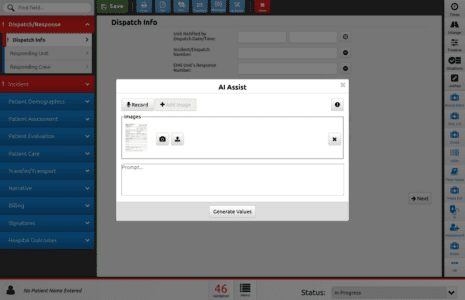First responders answer the call when their communities need them most. But the weight of that responsibility doesn’t disappear when the sirens fade. Behind the scenes, many EMS and fire professionals face compounding stress, emotional fatigue, and burnout—often without the support they need to process it all.
What if your agency could help prevent that burnout, not just react to it?
By analyzing the operational data you already collect, you can start identifying early indicators of stress and take steps to proactively support your teams. It doesn’t require a new app or overhaul. It just requires a shift in how we use the information we already have.
The Invisible Burden of the Job
The toll of the job isn’t just physical; it’s deeply emotional. From traumatic events to long shifts and increasing call volume, the demands placed on EMS and fire professionals have never been higher. And the data shows it:
- Nearly 30% of first responders will experience a behavioral or mental health condition, such as depression, PTSD, or substance use disorder.
- Up to 15% of EMS clinicians are currently living with PTSD.
- More than 80% of EMS professionals have encountered critical stress exposure on the job.
These numbers are significant. But what they represent, the daily, often invisible battles happening within your teams, is even more important.
Your Data Already Holds the Clues
Agencies are already collecting key indicators that reflect workload, call type, and shift intensity.
“Clinicians are constantly documenting data that can signal when someone might need support,” said Joe Graw, Chief Growth Officer at ImageTrend. “It’s not about adding extra work—it’s about helping leaders act on what’s already being captured.”
Call volume, acuity levels, response times, and documentation patterns all offer insight into the operational pressures your crews are experiencing. When reviewed over time, these details can surface meaningful trends, trends that may point to fatigue, burnout, or stress overload.
Pattern Recognition, Not Surveillance
It’s important to emphasize: this is not about tracking individuals or policing behavior. It’s about identifying potential red flags across the system, and responding with care.
Some examples of patterns worth monitoring include:
- Multiple high-acuity incidents during a single shift
- Decreased narrative quality or incomplete fields in documentation
- Stacked shifts across multiple agencies with little time for rest or recovery
Used thoughtfully, these patterns can prompt wellness outreach or operational adjustments, giving responders support before stress escalates into crisis.
“By using data thoughtfully, we can create a system that notices, and steps in, before that hard day becomes something worse,” Joe said.
Taking Action: Small Steps, Big Impact
Once your team begins identifying the patterns, the next step is turning those insights into action. That doesn’t have to mean major structural changes. Often, the most effective support is the simplest.
- Establish internal thresholds for potential burnout risk (e.g., a certain number of trauma calls within a set timeframe).
- Use existing tools within your ePCR or RMS system to flag when thresholds are met.
- Empower leaders or peer-support teams to reach out proactively—not to reprimand, but to check in.
These soft interventions, whether that’s a conversation, a wellness resource, or protected rest time, can make a powerful difference in someone’s mental well-being.
Building a Culture of Trust
Of course, all of this only works if there’s trust.
Many EMS and fire personnel hesitate to speak up about mental health challenges or report incidents of violence or emotional trauma, often fearing stigma or job consequences. That’s why it’s crucial to be transparent about how data is being used, and to communicate clearly that the purpose is support, not scrutiny.
“The data isn’t watching you, it’s watching out for you,” Joe shared. “We have to use the data we already collect to wrap our arms around our personnel, not just track operations.”
By normalizing these conversations and making the intent clear, agencies can begin shifting the culture toward one of openness, care, and shared responsibility. Some agencies are already taking steps to improve responder safety through better documentation and proactive interventions.
Why Now?
Supporting first responder wellness isn’t just a nice-to-have. It’s essential—and it’s urgent.
- Burnout and staffing shortages are on the rise. In Utah, a 2023 survey found that 67% of EMS providers had considered quitting in the past year due to stress and fatigue.
- Responder well-being directly impacts patient care. Nationally, burnout is now considered an occupational syndrome (ICD‑11) that contributes to turnover, absenteeism, and lower quality of care across EMS teams.
- Mental health support aligns with funding and accreditation. In 2024, SAMHSA awarded up to $10.4 million under its Rural EMS Training Grant for programs focusing on behavioral health and trauma-informed care training for EMS personnel.
As pressures increase, so do the opportunities to act. Agencies that prioritize mental health today aren’t just supporting their crews, they’re building more resilient, responsive systems for tomorrow.
A New Way to Use What You Already Have
You don’t need to build something new to show your crews you care. Start with what you already have.
By reframing operational data as a wellness tool, not just a performance metric, agencies can take meaningful, proactive steps to protect those who protect their communities.
Because when the job gets heavy, your data can help lighten the load.




